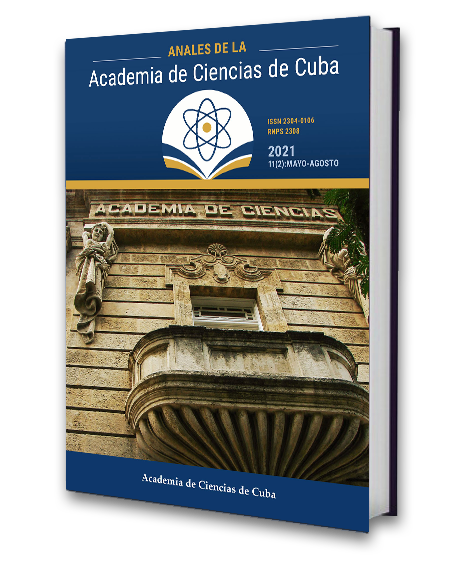Polycyclic aromatic hydrocarbons and polychlorinated biphenyls in soils of Havana and Mayabeque and its relation with food safety
Keywords:
environmental contaminants, GC-MS, safety, food, soilAbstract
Introduction: Soil acts as a major environmental recipient matrix of environmental pollutants and may affect food safety. Objective: Characterizing the polycyclic aromatic hydrocarbons (PAH) and polychlorinated biphenyls (PCB) in soils from different uses and the relation of the PAH in the grass, milk and vegetables.Methods: The concentration of ·16 PAHs y ·7 PCBs was determined in soils and food by gas chromatography coupled with mass spectrometry.
Results: The concentration of the ·16 PAHs in the soils from urban areas was higher than rural areas. 17 % of the agricultural soils was contaminated (·16 PAHs > 200 µg/kg). The bioavailability results about PAHs in soils were the first reports at a regional level, where the low molecular weight compounds (LMW) were more bioavailable. The studied soils were not contaminated by PCB (·7PCBs > 500 µg/kg). The presence of PAH was informed by the first time in grass, milk and vegetables in Cuba, the LMW compounds being predominant. The PAH concentration in milk and vegetables had a range of 6,86 to 13,49 and 8.00 to 33.00 µg/kg respectively. It is concluded that milk is safe for PAH. However, 100 % of the sample from vegetables had a concentration of the ·4PAH-high molecular weight above 1 ·g/kg, established for other foods by the Europe Union; this compromises their safety.
Downloads
Downloads
Published
How to Cite
Issue
Section
License
The journal Anales de la Academia de Ciencias de Cuba protects copyright, and operates with a Creative Commons License 4.0 (Creative Commons Attribution-NonCommercial License 4.0). By publishing in it, authors allow themselves to copy, reproduce, distribute, publicly communicate their work and generate derivative works, as long as the original author is cited and acknowledged. They do not allow, however, the use of the original work for commercial or lucrative purposes.
The authors authorize the publication of their writings, retaining the authorship rights, and assigning and transferring to the magazine all the rights protected by the intellectual property laws that govern in Cuba, which imply editing to disseminate the work.
Authors may establish additional agreements for the non-exclusive distribution of the version of the work published in the journal (for example, placing it in an institutional repository or publishing it in a book), with recognition of having been first published in this journal.
To learn more, see https://creativecommons.org






